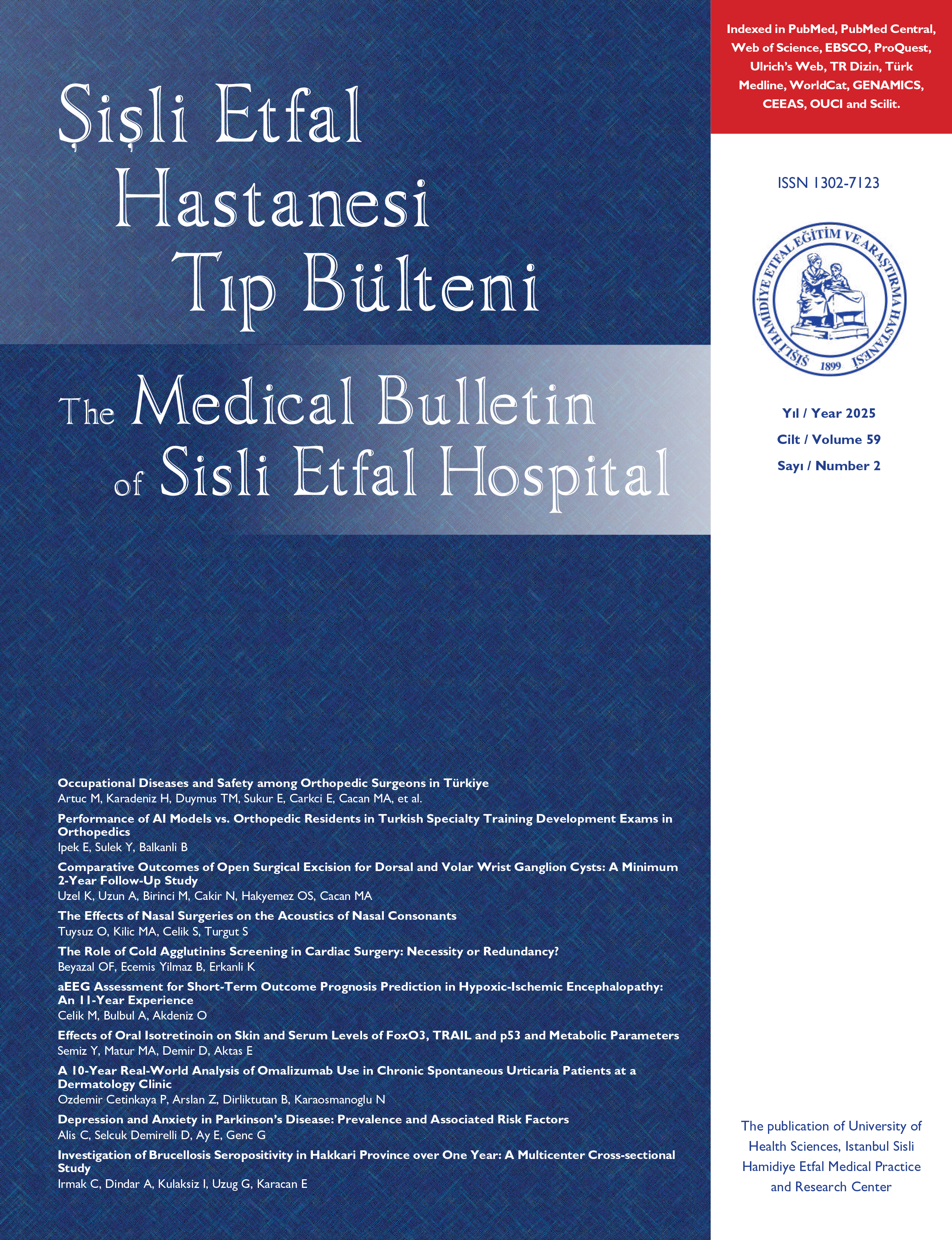
Behçet hastalığına sahip gebe hastada anestezik yaklaşım: Olgu sunumu
Mahmut Alp Karahan1, Evren Büyükfırat1, Tekin Bilgiç2, İnanç Havlioğlu11Harran Üniversitesi, Tıp Fakültesi, Anesteziyoloji ve Reanimasyon Anabilim Dalı, Şanlıurfa - Türkiye2Şanlıurfa Mehmet Akif İnan Eğitim ve Araştırma Hastanesi, Anesteziyoloji ve Reanimasyon Bölümü, Şanlıurfa - Türkiye
Amaç: Behçet Hastalığı alevlenmelerle seyreden, çoklu organ tutulumu gösteren, kronik enflamatuvar bir hastalıktır. Hastalık, tekrarlayan ağız ve genital bölge ülserleri, deri bulguları ve üveit ile karakterizedir. Bu olgu sunumunda acil sezaryen operasyonu planlanan Behçet hastalığına sahip gebede anestezi yönetimini tartıştık.
Olgu: On dokuz yaşında Behçet hastalığı tanılı gebe hasta fetal distres gelişmesi üzerine acil sezaryen planlandı. Hastamız bir yıl önce Behçet Hastalığı tanısı almış. Gebelik boyunca ilaçlarını kullanmayı bırakmış. Sezaryen operasyonu genel anestezi altında gerçekleştirildi. Hasta herhangi bir problem yaşanmadan 7.0 endotrakeal tüp ile ilk seferde entübe edildi. Anestezi oksijen, hava, sevofluran ve remifentanil ile idamesi sağlandı. Hemodinamik parametreler stabil seyretti ve herhangi bir komplikasyon yaşanmadı. Yenidoğanın 1. ve 5. dk Apgar skoru 8 ve 10 idi.
Sonuç: Perioperatif anestezik yaklaşımda temel problemleri, organ tutulumları ve havayolundaki skarlaşmaya bağlı zor entübasyon oluşturur. Kronik ilaç tedavisine bağlı olarak organ ve sistemlerde birtakım değişiklikler meydana gelmekte ve bu durum anestezi yönetimini daha da karmaşık hale getirmektedir. Sezaryen gerektiren Behçet hastalığına sahip gebe hastalar için anestezi tekniği her hastanın klinik durumuna göre değerlendirilip en son anestezistin takdirine kalır.
Anahtar Kelimeler: Behçet sendromu, gebelik, anestezi, genel.
Anesthesia management of pregnant patient with behçets disease: a case report
Mahmut Alp Karahan1, Evren Büyükfırat1, Tekin Bilgiç2, İnanç Havlioğlu11Harran Üniversitesi, Tıp Fakültesi, Anesteziyoloji ve Reanimasyon Anabilim Dalı, Şanlıurfa - Türkiye2Şanlıurfa Mehmet Akif İnan Eğitim ve Araştırma Hastanesi, Anesteziyoloji ve Reanimasyon Bölümü, Şanlıurfa - Türkiye
Objective: Behcets Disease is a chronic inflammatory with multiorgan involvements that it develope relapses. This disease is characterized with recurrent oral and genital ulcers, skin signs and uveitis. In this case report we discussed the anesthetic management of a pregnant patient with Behçets disease who underwent an emergency cesarean section.
Case: Nineteen year old pregnant patient with Behcets disease was scheduled for emergency caesarean delivery when fetal distress developed. She was diagnosed a year before and she did not use drugs during pregnancy. Cesarean section was performed under general anesthesia. Patients trackea was entubated with 7.0 endotracheal tube at the first attempt without any problems. Anesthesia was maintained with oxygen, air, sevoflurane and remifentanil. Hemodynamic parameters remained stable and there was no any complication. Apgar scores of the neonate were 8 and 10 at 1 and 5 minute respectively.
Conclusion: The main perioperative anaesthetic concerns are scarring of airway leading to difficult intubation and involvement of other organ systems. Due to the chronic drug therapy changes occur in organ systems causing more difficulty for the anaesthetic approach. The anesthetic technique for pregnant women with Behcets Disease requiring cesarean section remains at the discretion of the anesthesiologist, who should be guided by the clinical conditions of each patient.
Keywords: Behcet syndrome, pregnancy, anesthesia, general.
Makale Dili: Türkçe



















